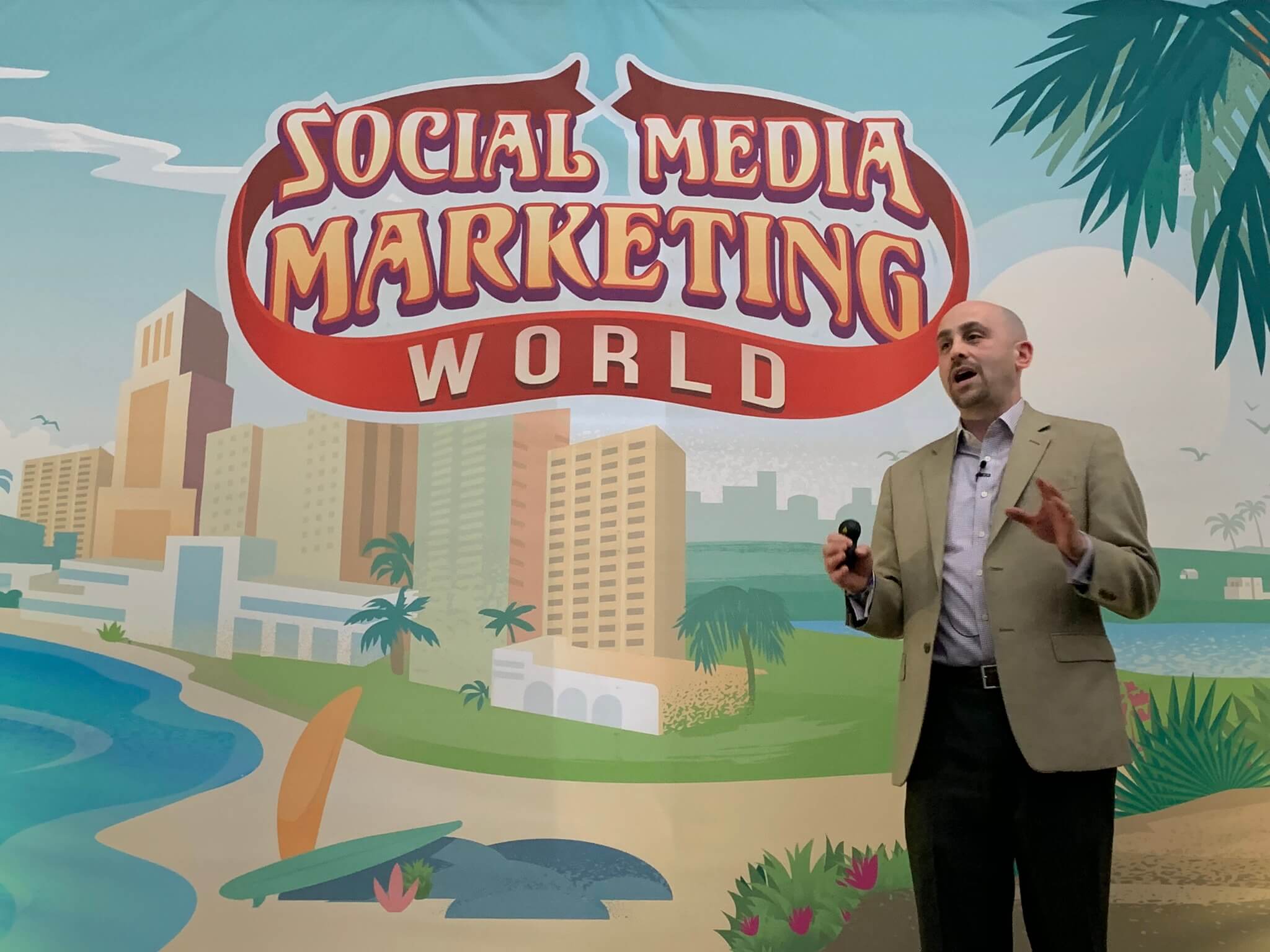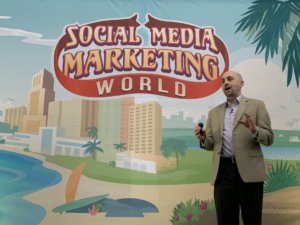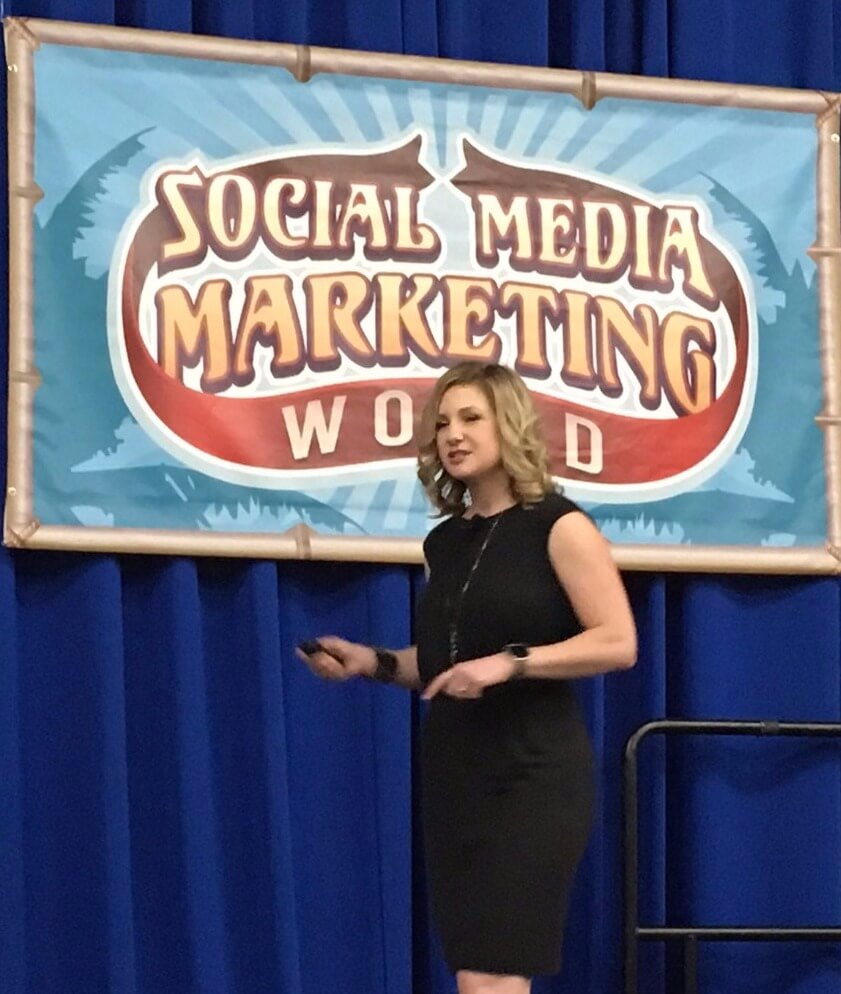
Although it is, at its essence, a marketing conference, the annual Social Media Marketing World gathering in San Diego is constantly adapting in step with the ever-changing world of social media.
In 2016, the conference organizers added a Customer Service track to the list of 20 or so other tracks. This year, attendance at several Customer Service sessions reportedly doubled from last year.
If you didn’t make it out to San Diego or couldn’t follow along at #SMMW17, here’s what you missed:
The always-dapper Jay Baer, author of Hug Your Haters, kicked off the Customer Service track in style with a great talk. He noted that by 2020, a majority of purchases will be based on customer experience, and that “great customer experience creates volunteer marketers”.
“The best companies in the world are raising the bar of customer expectations,” Baer said. He suggested that companies must do three things to stay ahead: Be faster, be more human and be more proactive than customers expect.
Exceeding expectations turns customers into advocates, he said, and the best way to accomplish this is to make every employee a customer service agent – thereby focusing everyone on the same goal.
As he noted in his book, Baer says that “social media customer service is a spectator sport” because it is practiced in public and onlookers often engage. “Be empathetic every time,” said Baer, and remember that in social media, “it’s emotion first, information second,” so stay calm.
Baer also encouraged companies to expand their social listening and “broaden your participation” by looking for proactive customer service opportunities.
Customer service expert and Amaze Every Customer Every Time author Shep Hyken excited the crowd with a presentation that was part magic, part fireside chat, and part dropping tons of customer service knowledge.
Up to 40% of satisfied customers don’t come back, said Hyken. In order to combat this frightening trend, companies need a predictable, consistent customer experience. “Average doesn’t get you there,” Hyken said. Companies must exceed customer expectations consistently.

Hyken explained that there is a “moment of truth” any time a customer interacts with a brand, and in that moment they have the chance to form an impression of the company. He refers to successful moments as “Moments of Magic” while the failures are “Moments of Misery”.
“If we take just a few minutes more with our customers, we can create Moments of Magic,” he said, adding that in order to avoid Moments of Misery, companies should:
“When you have a problem to solve, that is your opportunity to go above and beyond,” Hyken said, just before launching into a magic card trick that wowed the audience.
Next it was my turn to take the stage, and my presentation walked the audience through several real-life examples of offline experiences that can come online with a simple snap of a photo and share of a post or tweet.

I explained that social media is the first marketing channel where people get to talk back, and that there is a circular relationship between social media and customer experience. Customers amplify their experiences on social media, and how (or even if) a brand responds contributes right back to the experience. That’s why we see great examples of brands turning detractors into advocates just by engaging.
The formula for what gets shared is simple: Expectations + Emotions = Willingness to Share. When companies exceed expectations, they make customers happy – and very willing to share. Likewise, when they miss expectations, they make customers sad (or angry) – and also very willing to share. Unfortunately, most experiences are barely average, causing no sharing.
If brands don’t get the experience right, they will suffer the consequences in social media. But by adhering to one of Chicago Cubs Manager Joe Maddon’s key baseball principles, “Do simple better,” companies can take seemingly meaningless micro-moments in the consumer journey and make them memorable.
Blake Morgan, a customer experience thought leader and author of the upcoming book, More is More: How the Best Companies Work Harder and Go Farther to Create Knock-Your-Socks-Off Customer Experiences, was optimistic about the future of messaging bots.
The #1 customer frustration is having to repeat themselves, she said, and a major advantage of chatbots is that they can remember previous conversations. “There are many areas where chatbots can be more efficient than humans” for both the user and for brands, Morgan said.

The problem in social media, she said, is that “everybody talks. Nobody listens!”
She added: “Everyone from the CEO down needs to understand their customers’ lives and how they experience the brand.” Companies should make it hard on the business and easy on the customer, not the other way around.
Morgan also reminded the audience that customers don’t always want to have a relationship with a company; sometimes, they just want to get their problems solved. “Your digital strategy must be thoughtful and must consider the life your customer is living,” she said. “How will you leverage digital to make your customers’ lives easier and better?”
The first of two panel sessions began by continuing the discussion on messaging bots.
“In certain instances, bots can do it better than humans,” said Chad Israel of Hertz, mentioning language translation and reservations as examples. Kimarie Matthews of Wells Fargo agreed, adding: “Serve bots where bots will work and serve agents where agents will work.”
The panel, which also featured Madeleine Piercy from Duke Energy, covered a wide range of best practices from three brands – all featured on the Focus on Customer Service podcast – who are industry leaders in social customer care.
Israel told the audience that in order to integrate social media into the rest of the organization, Hertz holds weekly calls to ensure all departments are up to speed on the social media program.
Piercy explained how Duke Energy provides proactive customer service by alerting customers in social media to incoming bad weather. This engenders trust and loyalty to a company in an environment where consumers don’t have an alternative provider, she said.
And Matthews left the audience with this piece of advice: “Know your brand very well and know what your customers expect from it,” she said. “Let’s take advantage of the opportunity to have rich conversations with our customers.”
This panel, featuring Aggie Nixon-Kirschner from Marriott International, Nicolle Picray from Pella Doors & Windows, and Melissa Phillips from EmployBridge, and moderated by Manipurated author Daniel Lemin, asked the controversial question: Is it ever OK to offer incentives for reviews?
The consensus was that this is a practice best avoided. But that doesn’t mean you cannot reward customer feedback. You can offer some sort of gift before the customer even thinks to write a review, which can help frame reviews in a positive context.
Nixon-Kirschner of Marriott detailed how the hotel chain instructs its team to ask for feedback. “Some of our hotel staff keep cards with our profile information with them and present them to guests when they go out of their way to compliment us with an experience they’ve had,” she said. “[It’s] in an organic way, saying something like, ‘we appreciate this wonderful feedback – it would mean a lot to us if you would share your experience in a review on one of our social channels.’”
When is the right time to ask for a review or for customer feedback? Phillips of EmployBridge, a large temporary staffing firm, had a succinct but precise suggestion: “We ask when we give them their first paycheck. There’s nothing more positive than that first interaction.”
For Pella Doors & Windows, which has a customer lifecycle that spans sales, installation and product support, finding the right inflection point comes down to when the customer is most excited. The “thrill” of a door and window purchase isn’t as long lasting or exciting as a car purchase, for example, and therefore they ask right at the point of installation.
There was also a lot of discussion about positioning reviews on a company’s own retail or business website (“first party” reviews), versus funneling consumers to third-party sites (like Yelp and Angie’s List). To take full advantage of Google’s ranking algorithm it’s best to do both, as Google only rewards first-party reviews within search results.
The second year of the Customer Service track at Social Media Marketing World left audiences with the inspiration and tools needed to improve their own social customer care programs. And even sessions in other tracks maintained a focus on the customer, with many speakers citing customer experience as a key to marketing success.
Daniel Lemin contributed to this article.